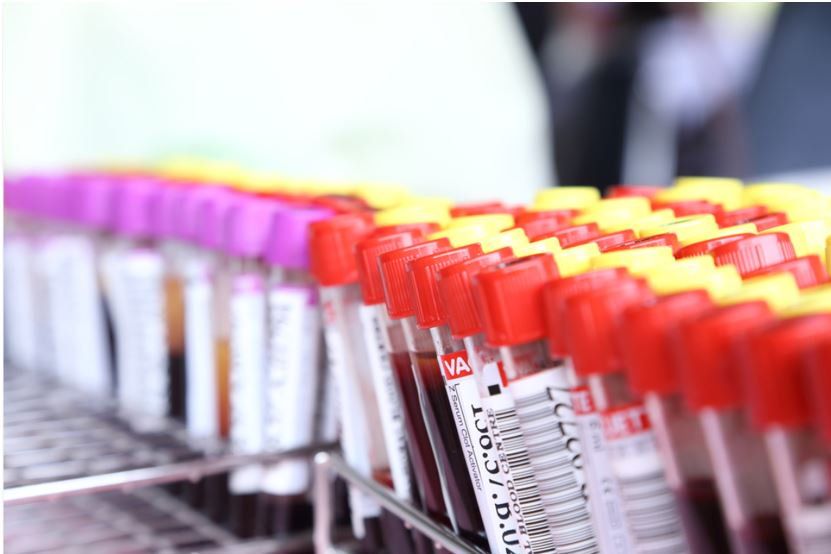- Clinical Technology
- Adult Immunization
- Hepatology
- Pediatric Immunization
- Screening
- Psychiatry
- Allergy
- Women's Health
- Cardiology
- Pediatrics
- Dermatology
- Endocrinology
- Pain Management
- Gastroenterology
- Infectious Disease
- Obesity Medicine
- Rheumatology
- Nephrology
- Neurology
- Pulmonology
New Approaches Improve Diagnosis, Prediction of Type 2 Diabetes
One US researcher notes that using A1c alone to classify diabetes may misdiagnose >33 million Americans. What are the other options and how well do they work? Read on.
©THALERNGSAK_MONGKOLSIN/Shutterstock.com <br/>

The accuracy of diagnosing and predicting type 2 diabetes mellitus (T2DM) and prediabetes could be improved by applying multiple or alternative measures, according to studies presented at the American Diabetes Association (ADA) Scientific Sessions meeting in San Francisco, CA, in June.
Joon Ha, PhD, Laboratory of Biological Modeling, National Institute of Diabetes and Digestive and Kidney Diseases (NIDDK), National Institutes of Health (NIH), Bethesda, MD, presented data indicating that the one-hour glucose (1h-PG) measure during an oral glucose tolerance test (OGTT) could be a useful biomarker for diagnosing and predicting T2DM and prediabetes (preDM).
Ha and colleagues used a longitudinal mathematical model to predict the pattern of glucose rise in 1h-PG and 2h-PG concentration with time and test predictions in a longitudinal cohort of 52 Pima Indians who were followed for 7.2±3.5 years.1
“Model simulations suggested that the 1h-PG would pass the threshold of 155 mg/dL before the 2h-PG passed the threshold of 140mg/dL for most individuals,” Ha explained, “and that the time difference could be as much as several years, depending on the balance of impairments in insulin resistance and early-phase insulin secretion.”
The investigators found that the times of crossing the respective thresholds were correlated, but that the 1h-PG crossed the 155 mg/dL threshold earlier, providing an earlier indication of future hyperglycemia. Additionally, since the 1h-PG and 2h-PG rose together during the progression from preDM to T2DM, Ha and colleagues suggest that a 1h-PG of 217 mg/dL could be an alternative marker to the 2h-PG of 200 mg/dL for the diagnosis of T2DM.
Next: Switch from OGTT to A1c in Denmark
Switch from OGTT to A1c
Bendix Carstensen, MSc, Senior Statistician, Clinical Epidemiology, Steno Diabetes Center, Copenhagen, Denmark, reported on the experience of changing the diagnostic criteria for diabetes in Denmark in 2011 from the OGTT to A1c.
“Several studies have shown that the OGTT identifies diabetes at a lower A1c level than the current threshold,” Carstensen explained. “Several countries have seen a decreasing type 2 diabetes incidence after 2011, possibly related to new diagnostic criteria. It is therefore conceivable," he indicated, "that the A1c level at the time of diagnosis should be increasing after 2011."
Carstensen and colleagues tested that possibility by ascertaining the frequency of obtaining A1c in patients with newly diagnosed T2DM in the period from 2010 to 2016. The A1c values were obtained from the national laboratory database for 98,010 persons out of 132,534 who were diagnosed with T2DM in this period, and linked to a national register on all T2 DM patients. The investigators chose the A1c measure closest to the date of diabetes diagnosis, if within a window from 3 months before to 1 month after diagnosis.2
Carstensen reported that while the incidence of T2DM diagnosis increased until 2011 and then declined until 2015, A1c was obtained at diagnoses with increasing frequency beginning in 2013. The increase in obtaining the measure despite decline in overall T2DM diagnoses was, he indicated, “presumably because the diagnosis is made at a more advanced state when using A1c as criterion as compared to OGTT.”
“Future studies will show whether changes in HbA1c levels influences the prevalence, incidence and mortality of persons included as diabetes patients in the register,” Carstensen suggested.
US group questions A1c
In contrast to the decision in Denmark to use the A1c in lieu of the OGTT, a US-based research group questioned its value. “HBA1c levels are widely used for diabetes diagnosis and management but may misrepresent underlying glucose levels,” indicated Lisa Staimez, MPH, PhD, Assistant Professor, Rollins School of Public Health, Department of Global Health, Emory University, Atlanta, GA.
Staimez related data from a sample of more than 10 000 non-pregnant adults and youth in the National Health and Nutrition Examination Survey 2005-1016 who had a 75-g OGTT. For each glycemic group, the investigators found that diagnostic categories were similar by OGTT criteria, but differed by A1c criteria.3
“Diagnostic classification by HbA1c alone could lead to misdiagnosis in over 33 million Americans, a problem across all age groups,” Staimez asserted.
In a separate study,4 Staimez and colleague tested whether complementing A1c with glucose testing improved diagnostic classification and management. They reported that use of random glucose followed by A1c did improve the accuracy and efficiency of screening, identifying both individuals who should and should not have an OGTT.
"Such a strategy might improve recognition of diabetes and prediabetes, permitting initiation of preventive management,” Staimez and colleagues concluded.
References:
References
1. Ha J, Chung ST, Sumner AE, et al. Using longitudinal modeling to find one-hour glucose laternatives to two-hour glucose for prediction and diagnosis of glucose tolerance. 1490-P
2. Carstensen B, Rønn PF, and Jørgensen ME. Incrase in HbA1c at time of diagnosis upon change to new diagnostic criteria in Denmark. Paper presented at the American Diabetes Association 79th Scientific Sessions; June 7-11, San Francisco, CA. Abstract 1491-P.
3. Staimez LR, Kipling L, Ford CN, et al. HbA1c and potential misclassification of diabetes and prediabetes diagnoses in the U.S. Paper presented at the American Diabetes Association 79th Scientific Sessions; June 7-11, San Francisco, CA. Abstract 1488-P.
4. Legvold BT, Staimez LR, Li D, et al. Use of random glucose followed by HbA1c improves the accuracy of opportunistic screening. Paper presented at the American Diabetes Association 79th Scientific Sessions; June 7-11, San Francisco, CA. Abstract 178-LB.
